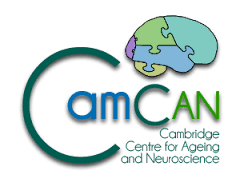CBSU bibliography search
To request a reprint of a CBSU publication, please
click here to send us an email (reprints may not be available for all publications)
VSTM Retinotopy: The spatial organisation of visual and parieal cortex during Visual Short Term Memory
Authors:
VICENTE-GRABOVETSKY, A., MITCHELL, D. & CUSACK, R.
Reference:
Cambridge Neuroscience: New Approaches in Neuroscience, Cambridge, UK
Year of publication:
2009
CBU number:
7017
Abstract:
Retinotopy is the topographic organisation of cortex, where different areas code distinct parts of the visual field. Studies of retinotopy have used sensory, attentional and spatio-motor paradigms to probe for topographic visual maps. In parietal cortex these attempts have resulted in conflicting results across studies, likely due to the low Signal to Noise Ratio (SNR) as compared to more posterior visual areas and because retinotopy was assessed by eye, instead of using a rigorous and consistent method to quantify retinotopy. In addition, investigations examining Visual Short-Term Memory (VSTM) retinotopy have only probed memory for space, but not storage of feature information. We used high resolution fMRI in conjunction with a retinotopy task that required remembering the spatial patterns within 2 of 4 quadrants of the visual field. We were able to separate the components (epochs) related to attention, memory maintenance and response (sensory retinotopy) by jittering the epoch timing. Visual cortex activated retinotopically in response to sensory, attentional and mnemonic stimulation consistently across subjects, and statistically confirmed in the majority of individuals. To provide greater sensitivity for regions with low SNR, multi-voxel pattern analysis (MVPA) was also used. This confirmed the results in visual cortex and also demonstrated retinotopy within the lateral occipital complex (LOC) for the attentional epoch; and within the inferior parietal sulcus (IPS) for both sensory and attentional epochs. These results are in contrast to superior and anterior parietal cortex, and frontal regions, which were strongly activated yet non-retinotopic.

 MRC Cognition and Brain Sciences Unit
MRC Cognition and Brain Sciences Unit

